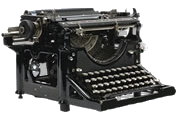Europe Enslaved (PM Tabloid, 1942)
Today in Europe there are more slaves than ever existed on any continent at any time. Hitler had to fight for every one of them… They used gangs, particularly in Poland, to round up workers from the streets, to drag them from churches and theaters and even from homes to go to work in Germany.
At the time it was estimated that there were as many as 6,000,000 slaves in Germany; half of them were prisoners of war.
Click here to read about the enslavement of France…
